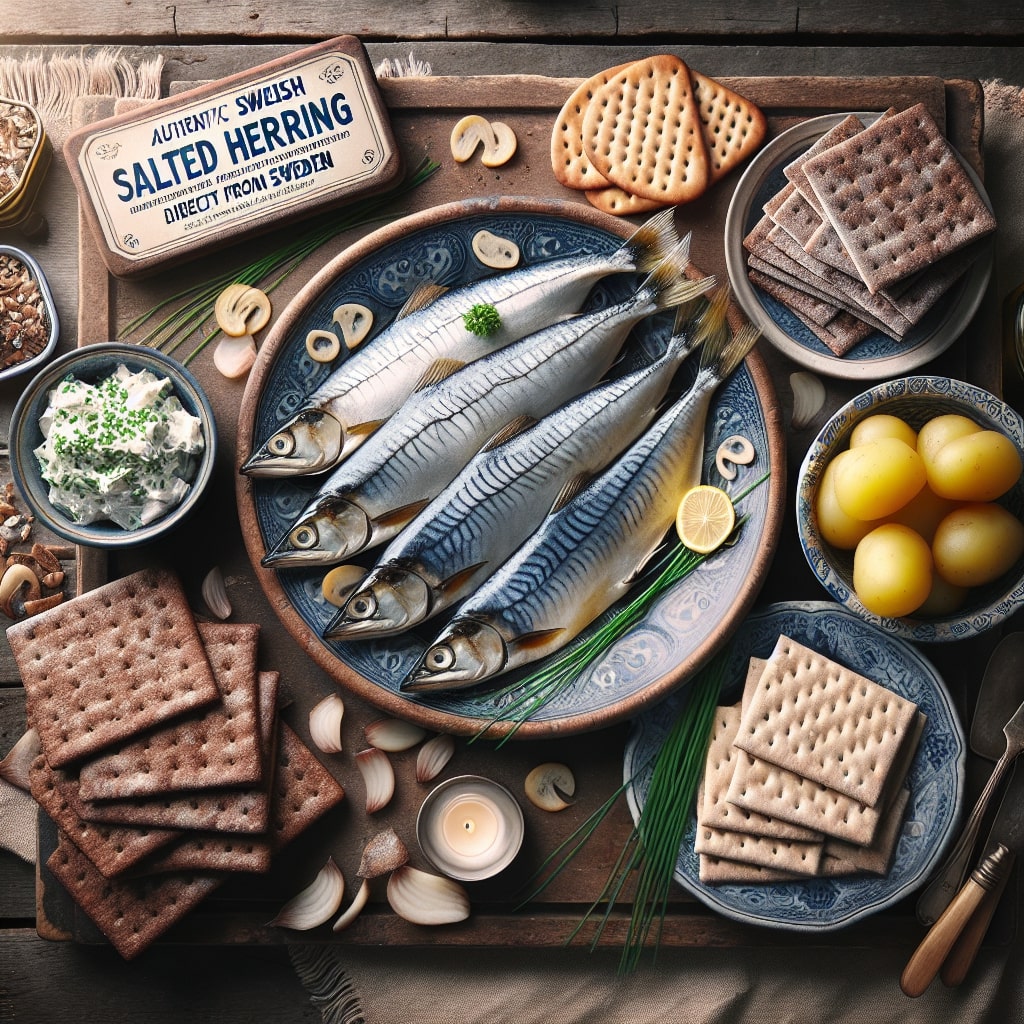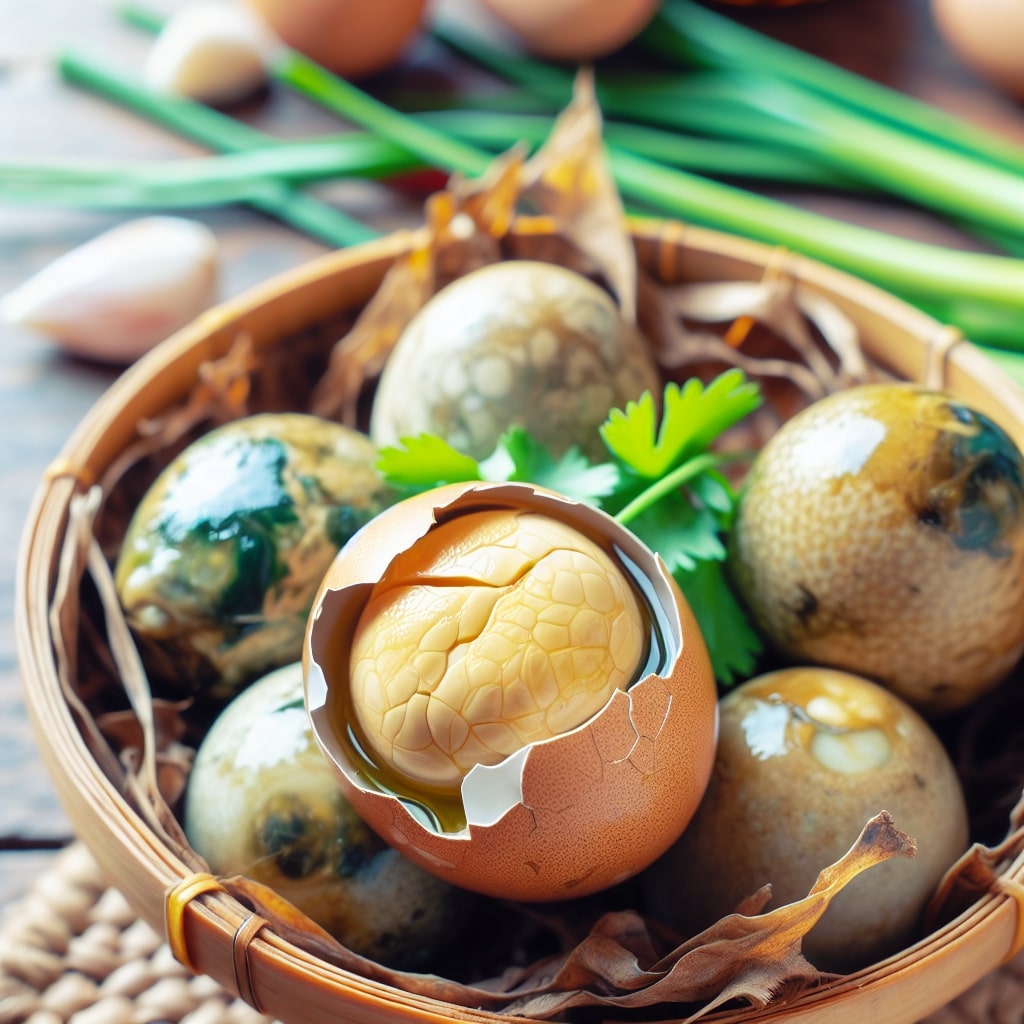Culinary Wonders: Three Bizarre Delicacies from Around the World (II)
Icelandic Fermented Shark, Swedish Salted Herring, Korean Live Octopus
Mr. LianxiPosted on 2024-01-06 20:32:29
#food
Continue Challenging Your Culinary Limits
After exploring delicacies like duck eggs, kasu-masu cheese, and natto last time, do you feel like you have a different perspective on global cuisine now? Don't worry; the world is vast, and there are plenty more exciting and unexpected dishes waiting to be discovered. Let's continue our journey to explore more uniquely distinctive local cuisines!
In this edition of Culinary Wonders, we will introduce you to three challenging dishes: fermented shark from Iceland, salted herring from Sweden, and live octopus from Korea. Are you ready for the adventure?
1. Hákarl: Fermented Shark from Iceland
Origin: Iceland
In Iceland, there's a unique dish called Hákarl, made by fermenting shark meat through a special process. The shark meat is buried underground for several weeks and then exposed to the air for fermentation. The resulting ammonia gives it a strong taste, challenging for many to adapt to. Although Hákarl is a traditional Icelandic dish, it poses a significant challenge for those not accustomed to its unique aroma.
 Generated by OpenAI DALL·E 3
Generated by OpenAI DALL·E 3
Origin and History
The story of Hákarl dates back to the 17th century when Icelanders discovered a method to make shark meat more palatable. This involved a fermentation and exposure process, traditionally using Greenland sharks abundant in the waters around Iceland. The method reflects the cooking needs of Icelandic hunters and fishermen in extreme conditions during the long and cold winter.
Production Method
Creating Hákarl is a unique and specialized process. Greenland sharks, known for their good meat quality, are initially chosen. The shark meat is then cut into strips and fermented in a specific location.
Fermentation involves burying the shark meat in sand, compacting it with weights to remove excess moisture. During the weeks of fermentation, a distinctive ammonia odor develops. The ammonia smell arises from the breakdown of urea present in the shark's blood.
After fermentation, the shark meat is removed, peeled, and sun-dried, usually outdoors, to enhance its flavor. The duration of the entire process influences the final taste and texture.
Cultural Significance
Hákarl holds deep cultural significance in Iceland and is often considered one of the national foods. It frequently appears in Icelandic celebrations and special occasions, celebrating the unique traditions and history of the country. Icelanders view Hákarl as a symbol of facing extreme environments and believe consuming it helps maintain body warmth.
Additionally, Hákarl is a traditional Icelandic Christmas dish, closely tied to local religious and festive customs. During Christmas, families gather to taste this fermented shark as a way of reunion and celebration.
Why it Challenges the Taste Buds
Hákarl's strong and distinctive flavor makes it a challenge for many. The intense scent, resulting from the ammonia and other volatile compounds during fermentation, is described as "somewhat like the smell of morning urine." Trying Hákarl requires courage and an open mind.
While the taste of Hákarl may be challenging for first-timers, some develop a liking for its unique flavor, considering it an excellent way to explore local culture and traditions. Travelers to Iceland are often invited to sample this dish, experiencing the unique culinary charm of the country.
2. Surströmming: Fermented Herring from Sweden
Origin: Sweden
Surströmming from Sweden is a fermented herring sold in canned form. What makes this dish special is the fermentation process, where the herring ferments in the can for several months, producing a highly challenging smell. Many describe the smell of Surströmming as so pungent that some countries prohibit opening and consuming it in public. Despite this, the dish is still considered a delicacy in Sweden.
 Generated by OpenAI DALL·E 3
Generated by OpenAI DALL·E 3
Origin and History
Surströmming's history traces back to the 16th century when Swedish fishermen began using fermentation to preserve fish, addressing the local cold climate and winter food storage needs. Initially, fermentation aimed to extend the shelf life of fish, gradually gaining popularity in Sweden's coastal regions.
The name "Surströmming" includes "Sur," meaning "sour" in Swedish, and "strömming," which translates to herring. The herring used in Surströmming comes from the rich waters of the North Sea and the Baltic Sea, making it the preferred choice.
Production Method
The production of Surströmming is a complex art that requires patience unique to the Swedes. Fresh herring is first caught, followed by a series of processing steps, including removing gills, gutting, and salting.
Next, the herring is placed in a sealed barrel for fermentation. This process typically takes several months, during which the fish releases ammonia and other odors, giving Surströmming a rich and pungent flavor. Once completed, Surströmming is ready for the market in canned form.
Cultural Status
Surströmming holds high cultural status in Sweden and is considered a national treasure. Every third Thursday of August, Swedes celebrate Surströmming Day, a festival dedicated to enjoying this delicacy. During this time, people gather to open cans of Surströmming, taste the dish, and enjoy socializing in a festive atmosphere.
In Swedish households, Surströmming is also a traditional winter food, cherished as a culinary delight in snowy landscapes. However, due to Surströmming's unique smell, it is not just a dish but a representative of Sweden's distinct culture on the global stage.
Tasting Experience
Tasting Surströmming is an extremely challenging experience. When you open the can, a strong and pungent smell greets you, originating from volatile compounds produced during fermentation, including ammonia and hydrogen sulfide. This smell is often described as "a bit like dirty socks and eggs," making it difficult for some to tolerate.
When tasting Surströmming, Swedes typically place it on thin bread or cracker slices and add ingredients like onions and potatoes to mitigate its strong flavor. Although the taste of Surströmming may not suit everyone, those who dare to try it often consider it a challenging and unique culinary experience.
3. Sannakji: Live Octopus from Korea
Origin: Korea
Sannakji from Korea is an incredibly challenging dish featuring live octopus. Unlike traditional cooking methods, this dish serves octopus that is still alive. The octopus is cut into small pieces and served immediately. The challenge lies in being careful to avoid the octopus tentacles, as they remain active during consumption. This food emphasizes freshness and provides a unique dining experience, widely loved.
 Generated by OpenAI DALL·E 3
Generated by OpenAI DALL·E 3
Origin and History
The history of Sannakji can be traced back to Korea's traditional fishing village culture, where fishermen would serve freshly caught octopus directly by the sea. This practice ensured the freshness and quality of the octopus. Over time, Sannakji evolved into a unique dish, becoming part of Korea's distinctive culinary culture.
Production Method
The preparation of Sannakji requires using live octopus, meaning the octopus must be lively before serving. Traditionally, chefs cut fresh octopus into small pieces, immediately serving them to diners. At this point, the octopus tentacles still show signs of life, moving around the plate and even wrapping around utensils and ingredients, creating a surprising spectacle.
Cultural Status
In Korea, Sannakji is regarded as a unique and enjoyable culinary experience. While it may not be a staple in daily meals, it often becomes a striking dish on the table during special occasions or festivals. The uniqueness of this dish lies in diners experiencing the vitality of the octopus while tasting it, making Sannakji a part of Korean dining culture.
Tasting Experience
Tasting Sannakji is an exceptionally unique culinary experience. As the octopus is still alive, diners need to be cautious about the movements of the ingredients on the plate and potential entanglement with chopsticks or around the tongue. This novelty often brings excitement to diners, reminding them that they are enjoying a living ingredient.
Traditionally, Sannakji is paired with condiments like sesame oil, soy sauce, and red pepper powder to enhance the flavor. Diners usually drizzle these seasonings on the octopus, making the overall taste more flavorful.
The History and Flavorful Journey of Icelandic Fermented Shark, Swedish Fermented Herring, and Korean Live Octopus
Fermented shark from Iceland, fermented herring from Sweden, and live octopus from Korea—all three dishes have unique histories, flavors, and cultural significance. Trying these challenging foods might not be for everyone, but they represent a deep dive into the culinary traditions and cultural stories of each respective country. If you ever have the opportunity, don't hesitate to embrace the adventure and try these unforgettable experiences.























